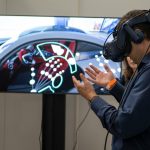Creating an immersive and accurate space adventure game is no small feat. Developers must balance engaging gameplay with scientific authenticity, particularly when simulating microgravity. Drawing on data from NASA and other scientific studies, game designers can build more realistic models that transport players into the depths of space. This article explores how developers can ensure their simulations are accurate and authentic, enhancing the gaming experience while adhering to scientific principles.
The Importance of Accurate Microgravity Simulation
Incorporating accurate microgravity in space adventure games is more than just a technical challenge; it’s essential for creating a believable and immersive player experience. Microgravity, a condition where objects appear to be weightless, is a critical aspect of space travel. It affects everything from human movement to the behavior of fluids and materials. By using real-world data and science-based models, developers can design games that not only entertain but also educate players about the real challenges of living and working in space.
Also to read : How can AI be used to create more realistic underwater physics in diving simulation games?
Microgravity is not just a concept but a reality that astronauts aboard the International Space Station (ISS) experience daily. By studying NASA missions and scientific experiments conducted in space, developers gain invaluable insights into the unique conditions of microgravity. This data lays the foundation for creating a more realistic simulation in games.
Accurate simulation starts with understanding the physics of microgravity. This includes grasping the nuances of Newton’s laws of motion, which govern how objects move in a low-gravity environment. For instance, an astronaut pushing off a wall in the ISS will continue moving in a straight line until an external force acts upon them. By incorporating these principles into game mechanics, developers can offer players a more authentic experience.
Also to read : How can developers use machine learning to optimize character facial animations in RPGs?
Leveraging NASA Data for Realistic Modeling
When it comes to simulations based on real-world science, NASA is an invaluable resource. The space agency has conducted numerous studies on the effects of microgravity, many of which are publicly accessible. These studies provide developers with a wealth of data that can be used to create accurate and engaging game environments. For instance, NASA’s Human Research Program examines how microgravity affects the human body, from muscle atrophy to bone density loss. By integrating this data, developers can design characters that move and behave in ways that are true to life.
In addition to human studies, NASA has conducted extensive research on the behavior of materials and fluids in microgravity. These findings can be applied to game models, ensuring that objects react realistically in a low-gravity environment. For instance, liquids form spherical shapes in microgravity due to surface tension, a detail that can be incorporated into game design for added authenticity.
Another valuable resource is the array of simulated environments used by NASA to train astronauts. These simulations replicate the conditions of space and provide a controlled setting for experiments. Developers can study these models to better understand the physical and psychological challenges of living in microgravity. By incorporating elements of these simulations into their games, developers can create more realistic and engaging experiences for players.
Designing Systems Based on Real Science
Accurate simulation in space adventure games requires a deep understanding of the underlying science. Developers must create systems that mimic the behavior of objects and characters in microgravity, which involves a combination of physics-based models and innovative design. One approach is to use computational fluid dynamics (CFD) to simulate the behavior of liquids and gases in low-gravity environments. This technique, commonly used in engineering, can be adapted for game development to create more realistic and dynamic environments.
Another key aspect is the development of realistic human movement models. In microgravity, traditional methods of locomotion, such as walking or running, are not applicable. Instead, astronauts use their hands to pull themselves along surfaces or push off walls to move from one place to another. By studying footage from the ISS and other space missions, developers can create detailed animations that accurately depict these movements. This not only enhances the realism of the game but also provides players with a unique and challenging gameplay experience.
Developers can also leverage machine learning and artificial intelligence to create more sophisticated simulations. These technologies can analyze vast amounts of data from NASA and other sources to generate models that are more accurate and responsive to changes in the environment. For instance, AI algorithms can predict how objects will behave in microgravity based on real-world data, allowing developers to create more dynamic and interactive game environments.
Balancing Realism with Gameplay
While scientific accuracy is crucial, it’s also important to balance realism with engaging gameplay. After all, a game that is too focused on scientific detail may become tedious or overwhelming for players. The key is to find a balance that maintains the authenticity of the simulation while providing an enjoyable and accessible experience.
One approach is to simplify certain aspects of microgravity without compromising the overall realism. For instance, developers can use visual and audio cues to help players understand how to navigate in a low-gravity environment. These cues can include visual indicators of momentum and direction, as well as sound effects that mimic the unique acoustics of space. By providing players with the information they need to succeed, developers can create a more intuitive and enjoyable gameplay experience.
Another strategy is to incorporate educational elements into the game. By explaining the science behind the simulation, developers can enhance the player’s understanding and appreciation of the challenges of space travel. This can be done through in-game tutorials, informational pop-ups, or even interactive exhibits that players can explore. By combining education with entertainment, developers can create a more engaging and rewarding experience for players.
Future Developments and Innovations
As technology continues to advance, so too will the possibilities for simulating microgravity in space adventure games. Emerging technologies, such as virtual reality (VR) and augmented reality (AR), offer new ways to create immersive and realistic environments. These technologies can provide players with a more visceral experience of microgravity, allowing them to feel as though they are truly floating in space.
In addition, advances in computational power and software development tools will enable developers to create more sophisticated and accurate simulations. For instance, real-time physics engines can now simulate the behavior of objects in microgravity with remarkable accuracy. These engines can handle complex interactions between objects, fluids, and gases, providing a more dynamic and interactive gameplay experience.
Collaboration between game developers and the scientific community will also play a crucial role in future developments. By working together, these two groups can share knowledge and resources, leading to more accurate and engaging simulations. For instance, scientists can provide developers with data and insights from space missions, while developers can create interactive models that help scientists visualize and analyze their findings.
Creating an accurate simulation of microgravity in space adventure games is a complex and multifaceted challenge. By leveraging data from NASA and other scientific studies, developers can build more realistic models that enhance the gaming experience. Through innovative design and the use of advanced technologies, developers can create immersive environments that transport players into the depths of space. By balancing realism with engaging gameplay, they can provide an experience that is both educational and entertaining. As technology continues to evolve, the possibilities for simulating microgravity will only grow, offering exciting new opportunities for game developers and players alike.
In conclusion, developers can ensure accurate simulation of microgravity by grounding their designs in real-world science and data. By studying NASA’s research and leveraging cutting-edge technologies, they can create games that are as informative as they are engaging. This approach not only enhances the player’s experience but also fosters a deeper appreciation for the incredible challenges and wonders of space travel.






